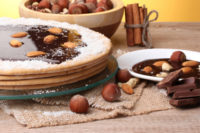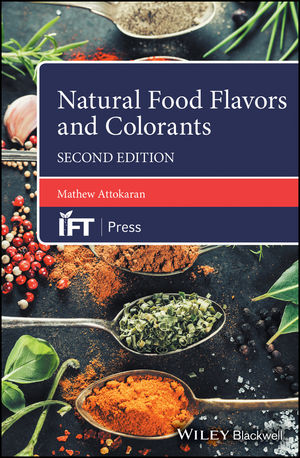The East: Market potential abounds in Pakistan, India, and U.A.E., but so do the challenges
Countries' demographics favor confectionery growth, yet each has its own distinct operating environment.












As Candy Industry’s Global State of the Industry headline pointed out in the June issue, today’s hot spot for confectionery growth is the East. It’s no surprise then to see the world’s leading confectionery manufacturers focus many of their resources on the Middle East, India, Far East and Pakistan. What is surprising, however, is the lack of familiarity about the region and the emerging confectionery and chocolate markets in this area.
Despite the lack of hard data for these markets, the following report provides realistic estimates and comparative analyses, thus providing a road map for navigating the dynamics of these fast-sprouting and unpredictable markets of the twenty-first century.
And what makes India, China, the Middle East, U.A.E and Pakistan the world’s hot spots for bilateral trade? Several factors have made them the most preferred trading partners, including high growth (annual chocolate growth in Pakistan has reached 19 percent, and 15 percent for India and the U.A.E. respectively, and 9 percent for China); a growing base of affluent consumers; a youthful population (55 percent of Pakistan’s population is younger than 25 years old, while it’s 47 percent for India, and 34 percent for U.A.E.); rapid capital inflow and retail expansion.
In reviewing the confectionery markets for Pakistan, India and the U.A.E., each country poses different opportunities and challenges.

Pakistan |
Pakistan
Despite being in its infancy, the outlook for chocolate retailing in Pakistan remains encouraging. Moreover, a steadily growing urban population and an accompanying growth in disposable income combined with an increased awareness for leading global brands has attracted many international players to start or expand business in the country.
For example, Muller & Phipps, the largest distribution house in Pakistan, has received many queries from renowned European and Middle-Eastern international players. These business opportunities, however, come with multifaceted challenges. So, foreign players shouldn’t expect Pakistan to be an easy playing field.
Consider these challenges: Customers demand more for less; high tariffs lead to under invoicing and “gray” imports; a high level of uncertainty exists because of the ever increasing U.S. dollar-PAK rupee disparity; a lack of infrastructure for chilled and frozen distribution; and social instability involving law and order in certain parts of the country remains a disturbing reality.
Add to this a 30 percent custom duty — calculated on a value inclusive of cost of freight (CNF) price, plus 1 percent insurance cost and 1 percent import value — and the challenges become formidable. With a withholding tax of 5 percent, the collective total import duty roughly comes out to 40 percent of CNF.
Despite all this, the accompanying chart shows an astounding growth in cocoa imports during 2011 and 2012.

India |
India
The confectionery industry in India is one of the fastest growing and well-established amongst the food processing segments. In India, Cadbury’s has a strong heritage and leadership position with a 30 percent confectionery market share (in 2009 and onwards). The candy maker remains the country’s No. 1 chocolate brand, holding a 70 percent market share. It is so closely associated with chocolate that cocoa trees are often called Cadbury trees.
As one of the BRIC countries (Brazil, Russia, India and China), India accounted for 55 percent of global confectionery retail growth in 2011. Like other Eastern markets, the Indian mass market is also very price sensitive. Within the upscale niche market, however, price is secondary to quality and brand image.
Like Pakistan, the distribution system in India comprises a large number of intermediaries. It, too, is characterized by a relatively poor chilled and frozen distribution infrastructure, lacking transportation, storage, and refrigeration facilities. It has low levels of efficiency, with high distribution costs. Nonetheless, the presence of a large, semi-organized retail sector and the recent emergence of international modern trade, does provide a valuable distribution base for imported brands.
Therefore despite all these obstacles, the Indian confectionery industry seems upbeat with players striving hard to achieve growth. Import data from the last two years also shows signs of confidence for exporting partners dealing with India.
United Arab Emirates

United Arab Emirates |
For a number of reasons, several international players have recently increased their focus on the U.A.E market. The country’s oil-based economy, which features a large base of foreign residents as well as a sizeable base of affluent youth, fuels an upscale market.
Through local investments, Cadbury’s, Kraft, Master Foods and Butlers Chocolate — among many others —have established strong footprints within U.A.E.’s competitive landscape. Similarly regional brands like Gandour, IFFCO, and Patchi are expanding aggressively in the region.
Premium, super luxury chocolate bars are also becoming more prevalent within the U.A.E. market, which cannot be said of Pakistan and India. Although chocolate shops have been introduced in Pakistan — specifically Butlers Chocolates and a few local chains have branches — they do not approach the scale of those present in the U.A.E., which parallel European standards.
Going local
To take advantage of the demographics and opportunities in India and Pakistan, while remaining conscious of the obstacles and challenges that exist, it’s important to find local entrepreneurs and distributors who can serve as critical partners in penetrating a splintered market
Appropriate pricing, product selection and positioning as well as the selection of the right distribution partners are the keys to success this region. Western companies could have substantial growth by striking good partnership deals with suitable local partners, and product portfolios should consist of both middle-tier and high-end products to balance out costs and efficiencies.
Looking for a reprint of this article?
From high-res PDFs to custom plaques, order your copy today!

















